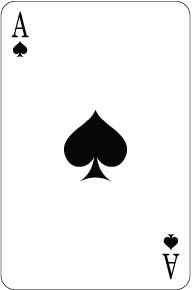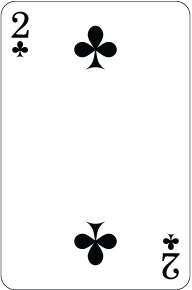Probability and Playing Cards
A deck of playing cards consists of 52 unique cards.
If you have a deck of 52 playing cards and randomly select a card, the probability of selecting a specific card is shown below:
Here is a card deck simulation. If you click on New Card, you will see a card randomly generated. Try it a few times. Then click on Reset to start again.
In this simulation each instance of a New Card is based on the 52 unique cards. It's the same as selecting a card at random and then putting the card back in the deck. This ensures that there are always 52 cards in the deck.
Activity 1
The probability of picking a specific card is around 2%. This means that for every 100 cards selected, two of them will be that card.
For this activity, you are looking for this card.

Follow these directions:
- Click on New Card 100 times. The Counter will keep track of the number of cards you have flipped.
- Make a note of the number of times you saw the ace of spades.
Analysis
How many times did you see the ace of spades? Repeat the activity and compare your results to the first instance.
Activity 2
Repeat the previous activity with this card.

Analysis
How many times did you see the two of clubs? Compare your results to that of the first activity.